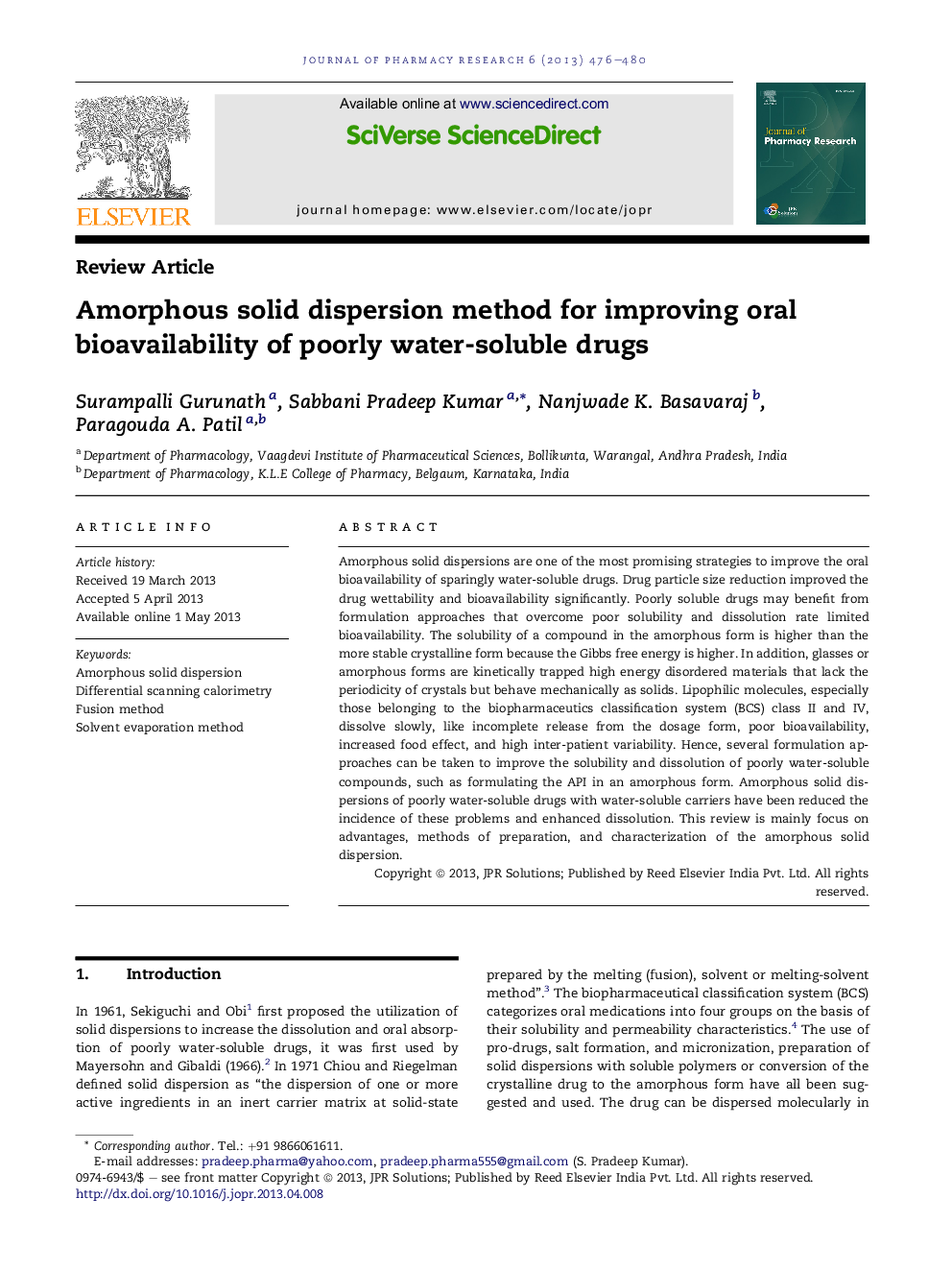| Article ID | Journal | Published Year | Pages | File Type |
|---|---|---|---|---|
| 8542277 | Journal of Pharmacy Research | 2013 | 5 Pages |
Abstract
Amorphous solid dispersions are one of the most promising strategies to improve the oral bioavailability of sparingly water-soluble drugs. Drug particle size reduction improved the drug wettability and bioavailability significantly. Poorly soluble drugs may benefit from formulation approaches that overcome poor solubility and dissolution rate limited bioavailability. The solubility of a compound in the amorphous form is higher than the more stable crystalline form because the Gibbs free energy is higher. In addition, glasses or amorphous forms are kinetically trapped high energy disordered materials that lack the periodicity of crystals but behave mechanically as solids. Lipophilic molecules, especially those belonging to the biopharmaceutics classification system (BCS) class II and IV, dissolve slowly, like incomplete release from the dosage form, poor bioavailability, increased food effect, and high inter-patient variability. Hence, several formulation approaches can be taken to improve the solubility and dissolution of poorly water-soluble compounds, such as formulating the API in an amorphous form. Amorphous solid dispersions of poorly water-soluble drugs with water-soluble carriers have been reduced the incidence of these problems and enhanced dissolution. This review is mainly focus on advantages, methods of preparation, and characterization of the amorphous solid dispersion.
Keywords
Related Topics
Health Sciences
Pharmacology, Toxicology and Pharmaceutical Science
Pharmacology, Toxicology and Pharmaceutics (General)
Authors
Surampalli Gurunath, Sabbani Pradeep Kumar, Nanjwade K. Basavaraj, Paragouda A. Patil,
